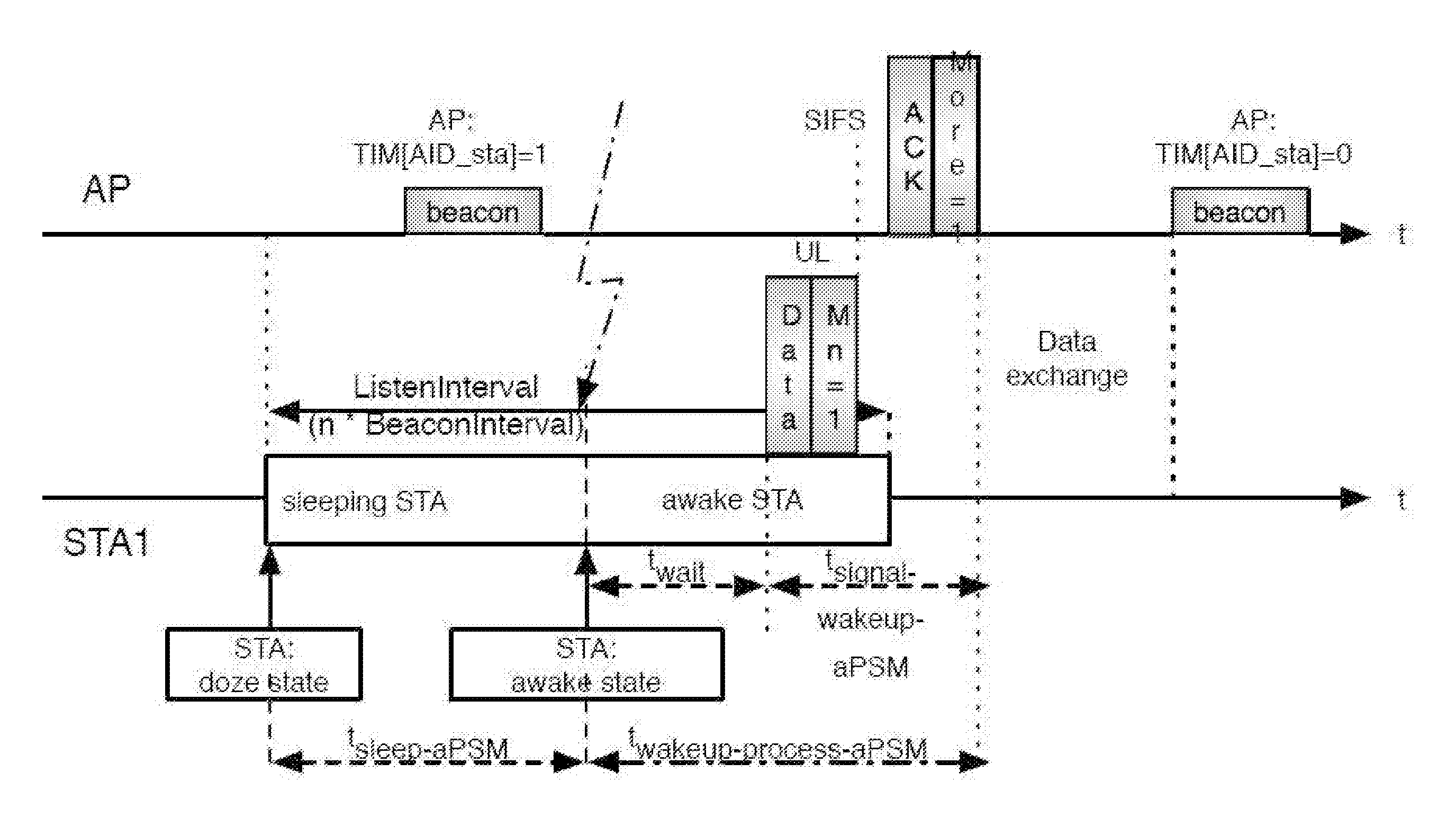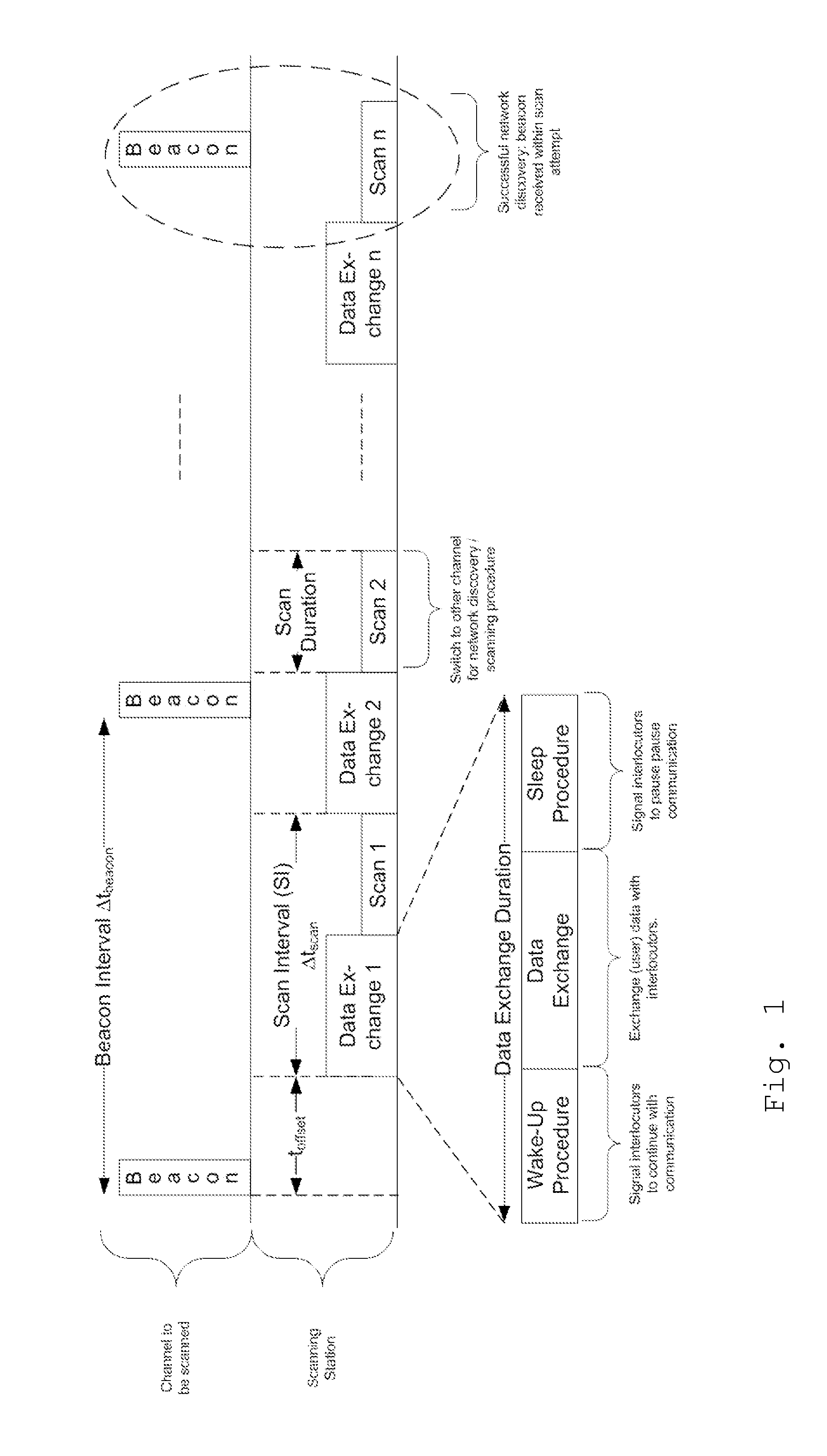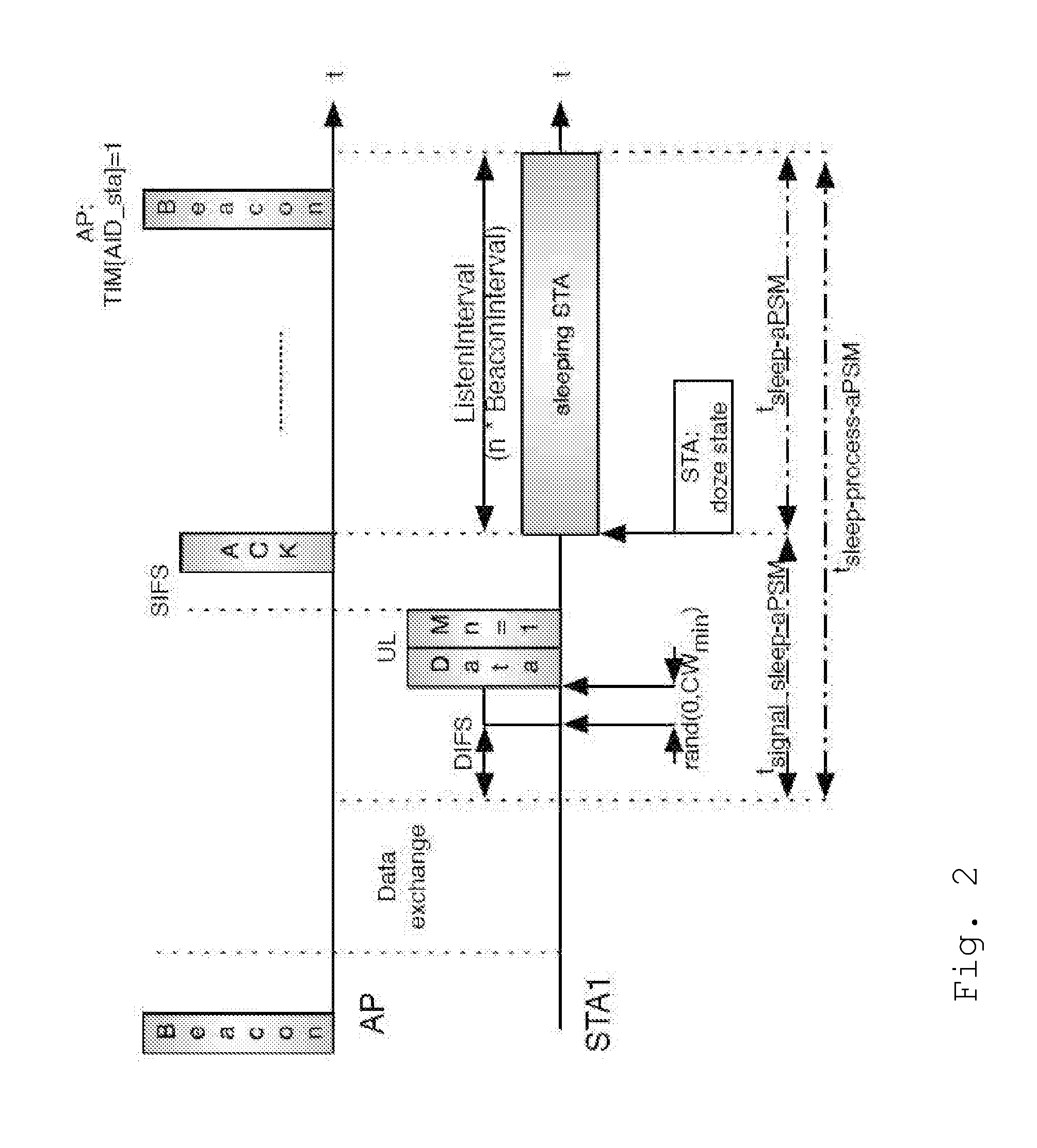Network discovery
a network discovery and wireless communication technology, applied in the field of network discovery in a wireless communication network, can solve the problem that opportunistic scanning cannot guarantee the detection of an existing technology within a single scanning period, and achieve the effect of reducing the impact of ongoing communication and service quality
- Summary
- Abstract
- Description
- Claims
- Application Information
AI Technical Summary
Benefits of technology
Problems solved by technology
Method used
Image
Examples
Embodiment Construction
[0033]The preferred embodiment of the present invention will be best understood by reference to the drawings, wherein identical or comparable parts are designated by the same reference signs throughout.
[0034]It will be readily understood that the present invention, as generally described and illustrated in the figures herein, could vary in a wide range. Thus, the following more detailed description of the exemplary embodiments of the present invention, as represented in FIGS. 1-8 is not intended to limit the scope of the invention, as claimed, but is merely representative of presently preferred embodiments of the invention.
[0035]An exemplary embodiment of the invention will now be explained in further detail, wherein a detailed performance analysis of Opportunistic Scanning using the 802.11 power save to pause any ongoing communication while scanning for other technologies, will be discussed. The following topics will be addressed:[0036]assessing the performance limits while conside...
PUM
 Login to View More
Login to View More Abstract
Description
Claims
Application Information
 Login to View More
Login to View More - R&D
- Intellectual Property
- Life Sciences
- Materials
- Tech Scout
- Unparalleled Data Quality
- Higher Quality Content
- 60% Fewer Hallucinations
Browse by: Latest US Patents, China's latest patents, Technical Efficacy Thesaurus, Application Domain, Technology Topic, Popular Technical Reports.
© 2025 PatSnap. All rights reserved.Legal|Privacy policy|Modern Slavery Act Transparency Statement|Sitemap|About US| Contact US: help@patsnap.com



